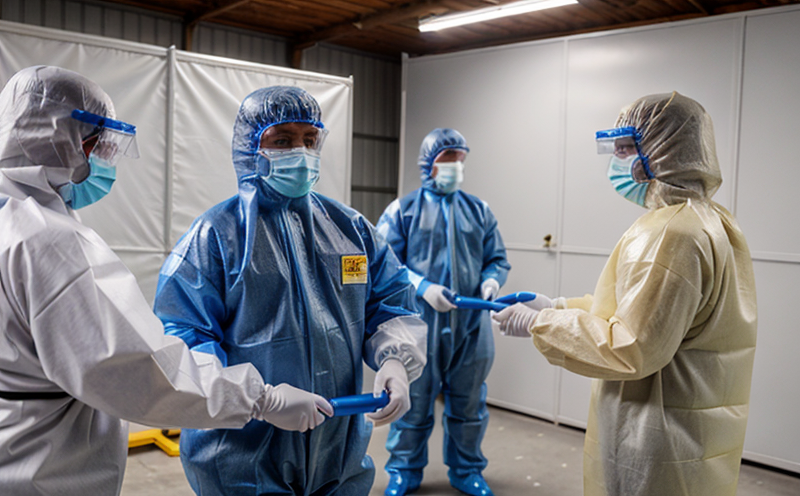Performance evaluation of protective gloves fabrics
The performance evaluation of protective gloves fabrics is a critical process that ensures personal protection equipment (PPE) meets stringent safety standards and provides reliable performance under various conditions. Protective gloves are essential in many industries, including healthcare, manufacturing, construction, and emergency services, where workers face hazardous environments or situations.
In the textile sector, protective clothing plays an integral role in safeguarding individuals from chemical, mechanical, thermal, and biological hazards. The textiles used for these gloves must undergo rigorous testing to ensure they provide adequate protection without compromising comfort or dexterity. This process involves evaluating various parameters such as tensile strength, puncture resistance, tear resistance, abrasion resistance, and permeability.
The testing of protective gloves fabrics is governed by several international standards including ISO 13940, EN 374-2, ASTM F703, and IEC 60601. These standards provide a framework for assessing the physical properties, chemical resistance, and biological barriers of textile materials used in protective clothing.
The first step in evaluating protective gloves fabrics is selecting appropriate test specimens. Specimens should be cut from the actual fabric to ensure accurate representation of the material's performance characteristics. Once selected, samples are prepared according to specific protocols outlined by relevant standards. This preparation may include conditioning the sample at specified humidity levels and temperatures for a defined period.
Following specimen preparation, testing can begin using various instruments designed to measure different aspects of textile performance. For instance, tensile strength tests assess how much force is required to break or tear through the fabric. Puncture resistance tests determine the maximum pressure that can be applied before causing penetration through the material. Tear resistance measures the ability of the fabric to withstand tearing along specific lines.
Abrasion resistance evaluates the durability of the gloves against frictional forces, which is particularly important for fabrics used in abrasive environments such as mining or sandblasting operations. Permeability tests assess how effectively the glove material blocks liquids and gases from penetrating it—a crucial factor when dealing with hazardous chemicals.
Once all necessary measurements have been taken, results are compiled into comprehensive reports that summarize the performance of each fabric sample against set criteria defined by applicable standards. These reports serve as valuable resources for manufacturers seeking to improve their product offerings or meet regulatory requirements imposed by governing bodies worldwide.
Why It Matters
The importance of properly evaluating protective gloves fabrics cannot be overstated. Properly designed and tested gloves significantly reduce the risk of injury or exposure to hazardous materials, thereby enhancing worker safety and operational efficiency.
- Avoiding Injuries: By ensuring that protective gloves are made from high-quality textiles with adequate protection against cuts, punctures, and abrasions, workers can perform their jobs safely without fear of sustaining serious injuries.
- Chemical Protection: Testing ensures that fabrics provide effective barrier properties against various chemicals, preventing skin absorption or contact dermatitis even in prolonged exposure scenarios.
- Biological Defense: Textile performance evaluations help guarantee that gloves offer sufficient protection against infectious agents and other biological hazards present in certain work environments.
- Ergonomics & Comfort: Evaluations also focus on how well the fabric allows for natural hand movements, ensuring that workers remain comfortable throughout their shifts without sacrificing necessary protective features.
Applied Standards
The performance evaluation of protective gloves fabrics adheres to a number of recognized international standards. These include:
- ISO 13940:2016 - Protective clothing against chemical hazards
- EN 374-2:2018 - Gloves for protection against chemical hazards, Part 2: Protection against liquids
- ASTM F703:2020 - Standard specification for protective gloves of woven fabric for use in the metalworking industry
- IEC 60601-4-8:2019 - Medical electrical equipment - Particular requirements for basic safety and essential performance of protective gloves used with medical electrical equipment
Use Cases and Application Examples
| Use Case | Description |
|---|---|
| Hazardous Environment Work | In industries like chemical manufacturing, handling hazardous materials requires protective gloves fabricated from fabrics that can withstand extreme conditions. Our tests ensure these textiles meet necessary resistance levels. |
| Healthcare Settings | Gloves used in hospitals and clinics must protect healthcare workers from infectious agents while allowing for dexterity needed during procedures. We evaluate fabrics based on their ability to block pathogens effectively. |
| Metalworking Industries | Workers engaged in metal fabrication need robust gloves that can handle sharp tools and machinery without compromising grip or dexterity. Our evaluations focus on both physical strength and ergonomic design aspects. |
- Hazardous Environment Work: Gloves used in chemical manufacturing, handling hazardous materials require protective gloves fabricated from fabrics that can withstand extreme conditions. Our tests ensure these textiles meet necessary resistance levels.
- Healthcare Settings: Gloves used in hospitals and clinics must protect healthcare workers from infectious agents while allowing for dexterity needed during procedures. We evaluate fabrics based on their ability to block pathogens effectively.
- Metalworking Industries: Workers engaged in metal fabrication need robust gloves that can handle sharp tools and machinery without compromising grip or dexterity. Our evaluations focus on both physical strength and ergonomic design aspects.





